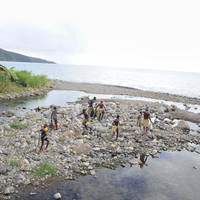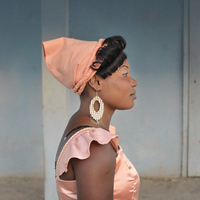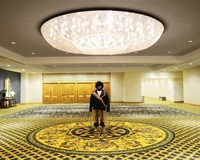Filtrer par
394
résultats
Rappel de recherche : Type de contenu : Photographie
Modifier les filtres
Exporter les résultats sélectionnés
Sélectionner tous les résultats de la page

-
Notice détaillée
Titre : Arbitre au Pitt Pont Vert du Lamentin, 2012. [02]Auteur : André, Jean-Michel (1976-....)Lieu de la prise de vue : Le LamentinDate : 2012Extrait de : Combats de coqsType : Photographie - CouleurConditions d'utilisation : CC-BY-NC-ND - Attribution - Pas d'utilisation commerciale - Pas de modificationProvenance : Université des Antilles


-
Notice détaillée
Titre : Arbitre au Pitt Pont Vert du Lamentin, 2012. [03]Auteur : André, Jean-Michel (1976-....)Lieu de la prise de vue : Le LamentinDate : 2012Extrait de : Combats de coqsType : Photographie - CouleurConditions d'utilisation : CC-BY-NC-ND - Attribution - Pas d'utilisation commerciale - Pas de modificationProvenance : Université des Antilles


-
Notice détaillée
Titre : Arbitre au Pitt Pont Vert du Lamentin, 2012. [04]Auteur : André, Jean-Michel (1976-....)Lieu de la prise de vue : Le LamentinDate : 2012Extrait de : Combats de coqsType : Photographie - CouleurConditions d'utilisation : CC-BY-NC-ND - Attribution - Pas d'utilisation commerciale - Pas de modificationProvenance : Université des Antilles


-
Notice détaillée
Titre : Baby Coco, éleveur et soigneur, Le Robert, 2010.Auteur : Charlotte, Robert (photographe)Lieu de la prise de vue : Le RobertDate : 2010Extrait de : Véyé Lavi'wType : Photographie - CouleurConditions d'utilisation : CC-BY-NC-ND - Attribution - Pas d'utilisation commerciale - Pas de modificationProvenance : Université des Antilles


-
Notice détaillée
Titre : Basse TerreAuteur : Lo Calzo, Nicola (1979-....)Lieu de la prise de vue : Basse-TerreExtrait de : Cham, la mémoire vivanteType : Photographie - CouleurDescription : The members of the group reach the sea to bathe and liberate themselves from the mas. In the group’s symbolism, the bathing in the sea or river concludes the “charge” on «Mardi Gras», the last day of the Carnival in the catholic calendar. It is an emblematic moment that allows the members firstly to purge themselves from the “mas” to reclaim their individual identity, and secondly, to be reconciled with the “treacherous” sea and to reaffirm their relationship to the island’s history: the place of the bathing is just beneath the Fort Delgrès, a hotbed of the resistance to slavery.Conditions d'utilisation : CC-BY-NC-ND - Attribution - Pas d'utilisation commerciale - Pas de modificationProvenance : Université des Antilles


-
Notice détaillée
Titre : Bettye Jenkins, Hawthorne House, Natchez Mississippi.Auteur : Lo Calzo, Nicola (1979-....)Lieu de la prise de vue : NatchezExtrait de : Cham, la mémoire vivanteType : Photographie - CouleurDescription : My parents bought this house in 1930. It was built in 1840. They got it in really bad condition and my family restored it. This was not really a plantation; it was a Spanish land ground of sixty-six acres. The plantation was some miles away from here. This house was a urban home. My husband’s family were cotton planters, they were some of the early settlers here. My family came from Virginia in the early 1800’s and moved to Natchez in 1938. My mother gave me this house and gave me this tradition of pilgrimage. I’m a member of the Pilgrimage Garden Club and my mother was one of its founding figures. Bettye JenkinsConditions d'utilisation : CC-BY-NC-ND - Attribution - Pas d'utilisation commerciale - Pas de modificationProvenance : Université des Antilles


-
Notice détaillée
Titre : Blondine, prête à danser dans le temple de Badjo, Festivités annuelles de Badjo, Ville de Gonaïves, 2013.Auteur : Lo Calzo, Nicola (1979-....)Lieu de la prise de vue : Les GonaïvesDate : 2013Extrait de : Cham, la mémoire vivanteType : Photographie - CouleurDescription : Les couches paysannes, désormais en grand partie urbanisées, ont intégré la mémoire de l’esclavage dans d’autres formes de narrations que celles du récit familial. Elle portent une mémoire collective ancestrale qui a choisi la religion Vaudou comme lieu principale d’expression. Le couvent de Badjo fait partie de ce qu’on appelle le Triangle d’Or, qui comprend les trois lieux sacrés les plus importants du pays: le lakou de Badjo, le lakou de Souvenance et lakou de Soukri. A chaque lakou, littéralement, «couvent», correspondant trois rites différents, respectivement Nago, Dahomey et Congo. Les trois lakou conservent des objets sacrés de Jean Jacques Dessalines qui, dans le système complexe du panthéon Vaudou haïtien, correspond à première divinité Ogou, dieu de la guerre.Conditions d'utilisation : CC-BY-NC-ND - Attribution - Pas d'utilisation commerciale - Pas de modificationProvenance : Université des Antilles


-
Notice détaillée
Titre : Bobby Williams wearing blackface in the Hall of the Hotel Hilton, Zulu Social Aid & Pleasure Club New Orleans.Auteur : Lo Calzo, Nicola (1979-....)Lieu de la prise de vue : La Nouvelle-OrléansExtrait de : Cham, la mémoire vivanteType : Photographie - CouleurConditions d'utilisation : CC-BY-NC-ND - Attribution - Pas d'utilisation commerciale - Pas de modificationProvenance : Université des Antilles


-
Notice détaillée
Titre : CLEMENT OLIVIER DE MONTAGUERE, descendant of Olivier de Montaguere in the family cemetery, Ouidah.Auteur : Lo Calzo, Nicola (1979-....)Lieu de la prise de vue : BéninExtrait de : Cham, la mémoire vivanteType : Photographie - CouleurDescription : Clement is a member of this family originally from Marseille, France. His ancestor, Olivier de Montaguere, was the nineteenth steward of the French Fort for Louis XVI. He arrived in Ouidah in 1776. He brought with him his wife and their three children, Joseph, Nicolas and Jean Baptiste and organized the slave trade with the French West Indies, «He disappeared during one of his trips to the Caribbean and he is never returned to Ouidah» said Clement Olivier of Montaguere. Their descendents still live today in the old compound of their ancestor. Unlike many other local families, they have no voodoo altars in their homes, and while claiming their European origins, they strictly observe the catholic religion. Today, in the family cemetery (where I got the pictures), the oldest tomb is to Nicolas Olivier de Montaguere’s. According to the tradition, Nicolas grew up with the king of Dahomey Agonglo (1789-1797). After his adolescence spent in Abomey with the king, he returned to Ouidah in his father’s family home when he continued to deal palm oil . Nicolas and Joseph’s descendants still live in the old compound of their ancestors. They have maintained a position of prestige in the society, and historically occupy important positions in the public administration. Ouidah, Benin.Conditions d'utilisation : CC-BY-NC-ND - Attribution - Pas d'utilisation commerciale - Pas de modificationProvenance : Université des Antilles


-
Notice détaillée
Titre : Caloges du Pitt Pont Vert du Lamentin, 2012.Auteur : André, Jean-Michel (1976-....)Lieu de la prise de vue : Le LamentinDate : 2012Extrait de : Combats de coqsType : Photographie - CouleurConditions d'utilisation : CC-BY-NC-ND - Attribution - Pas d'utilisation commerciale - Pas de modificationProvenance : Université des Antilles

Save search
Recherche
25366 documents en libre accès